RARE* May 1918 Dated - Marbache Sector - Meuse-Argonne Offensive Trench Map - "Verdun" - 1st Lieut.. E. V. McKey Jr. - 134th Field Artillery

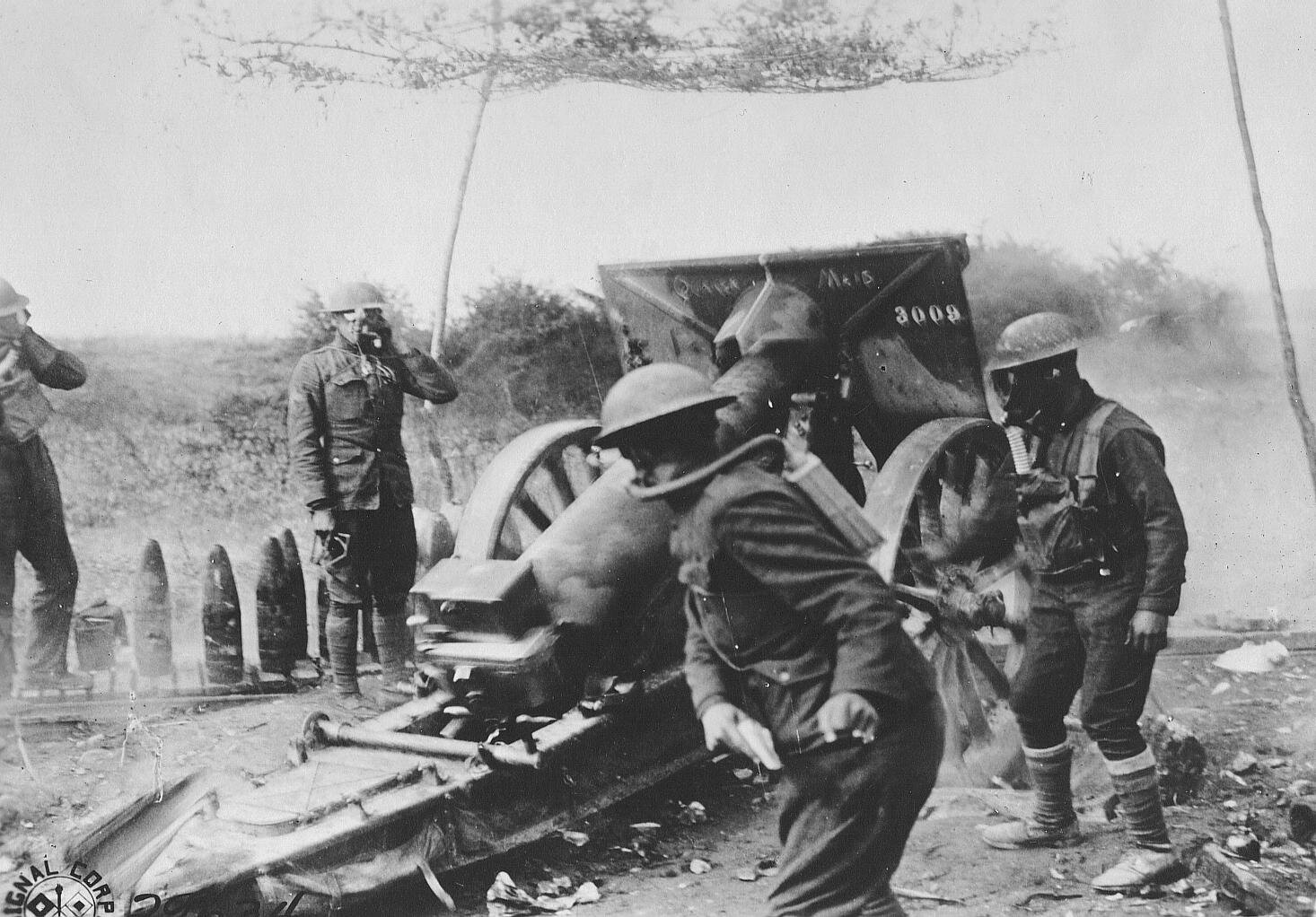







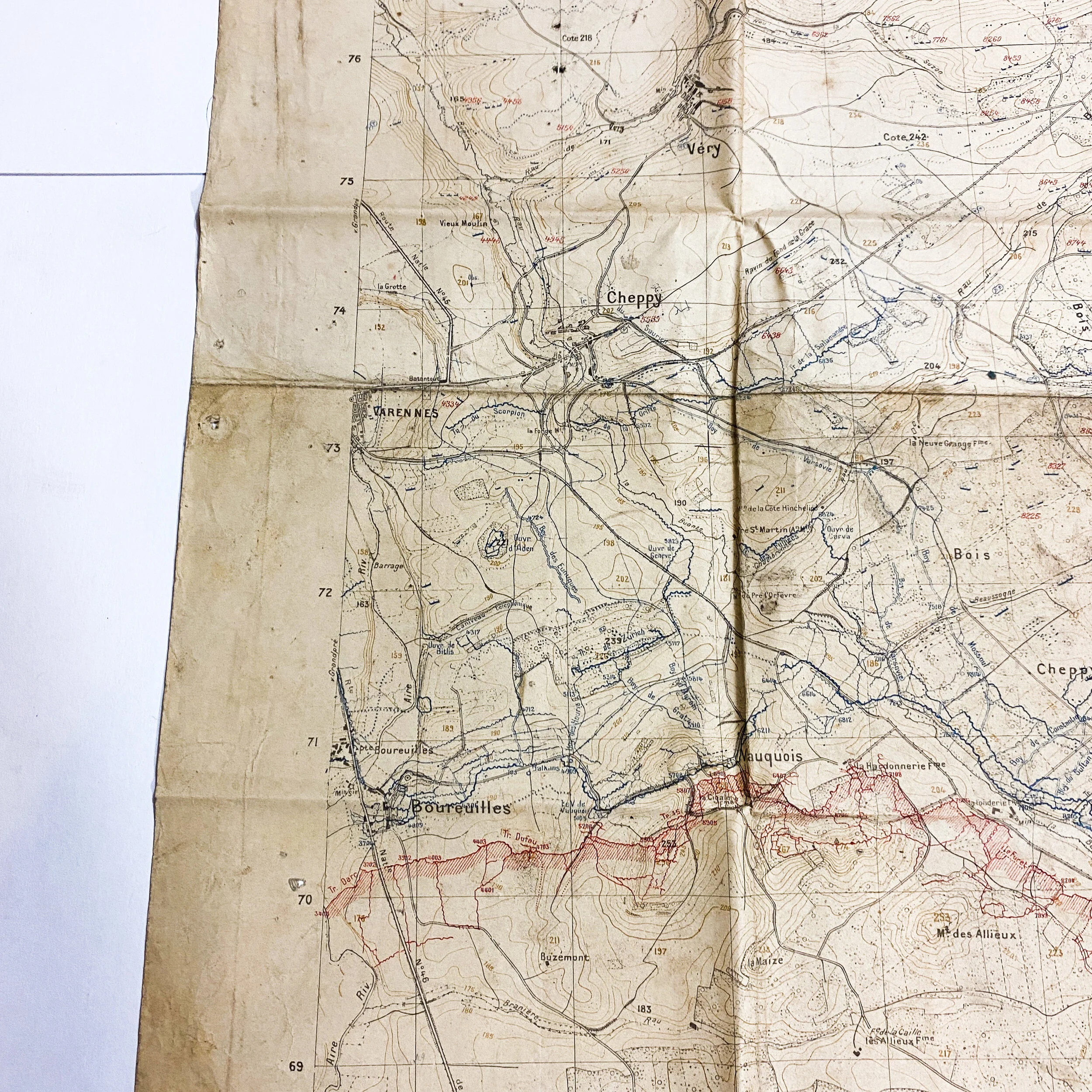
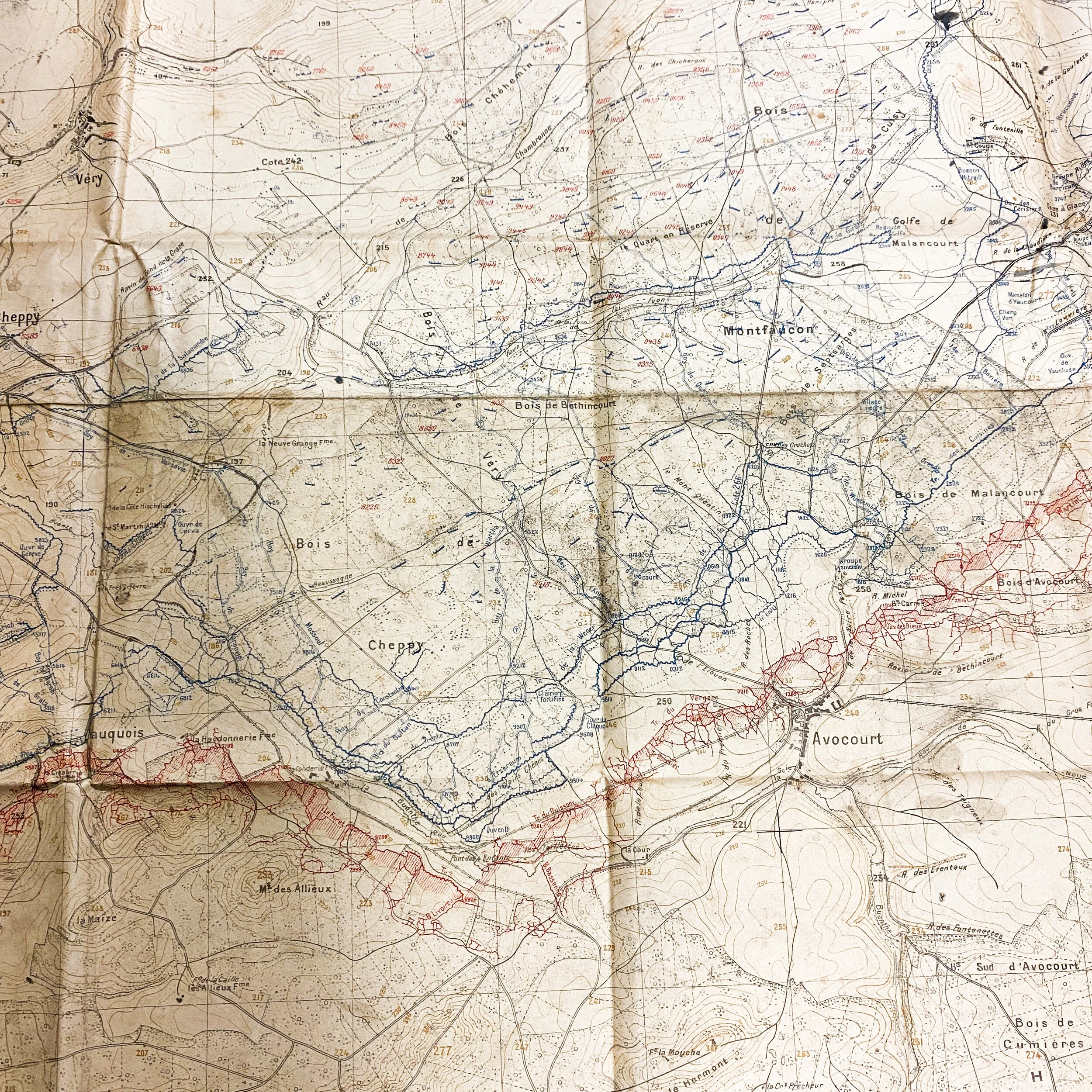





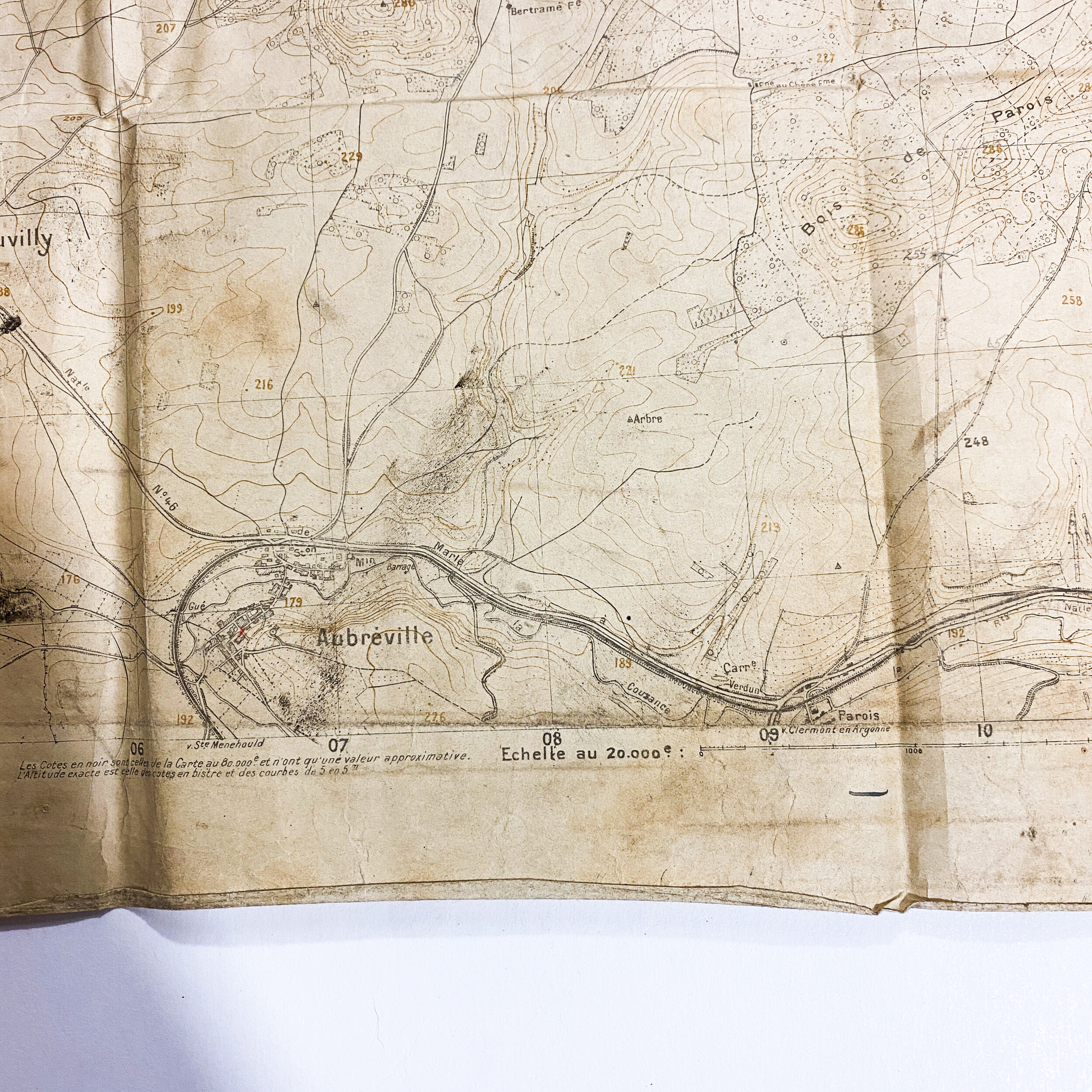





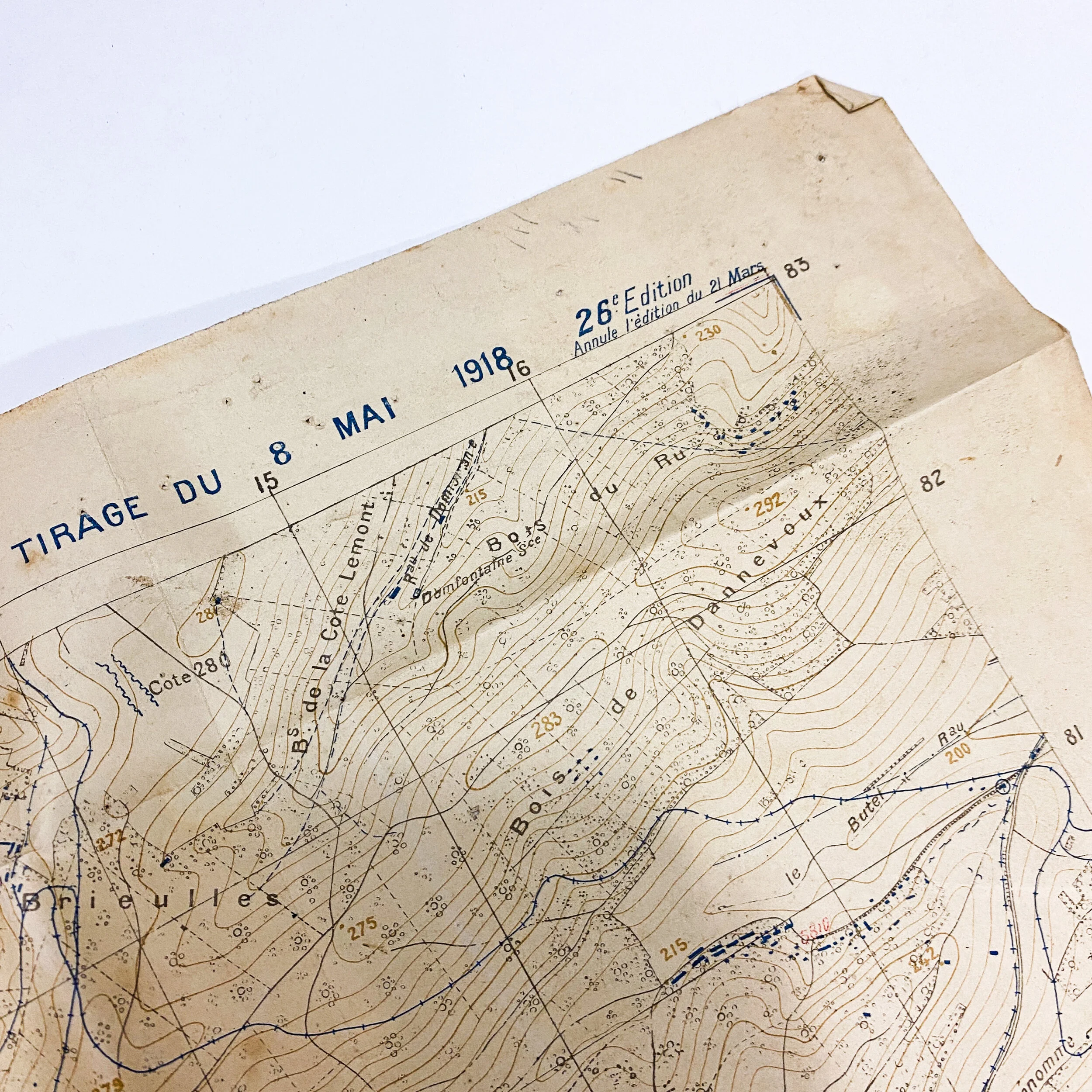





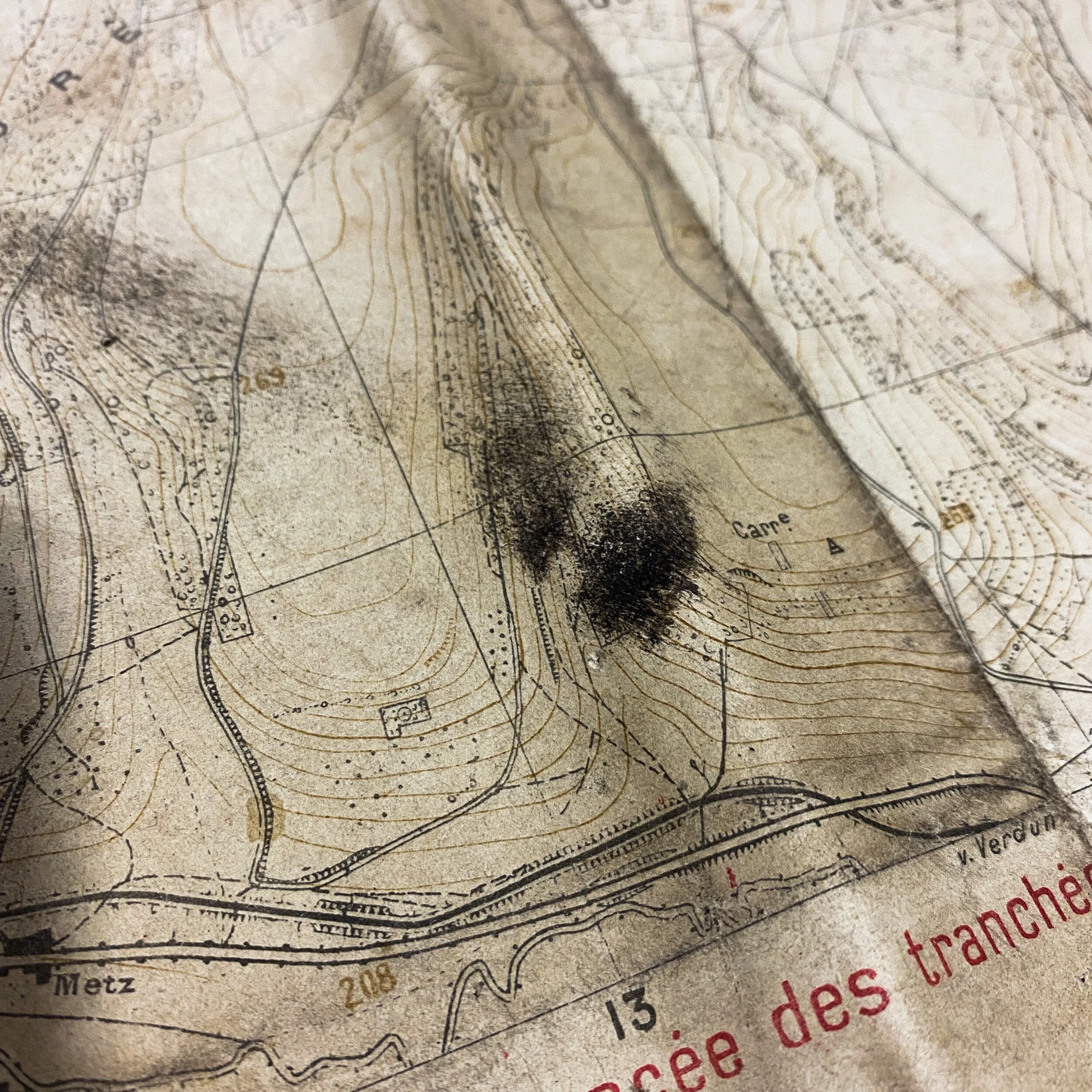


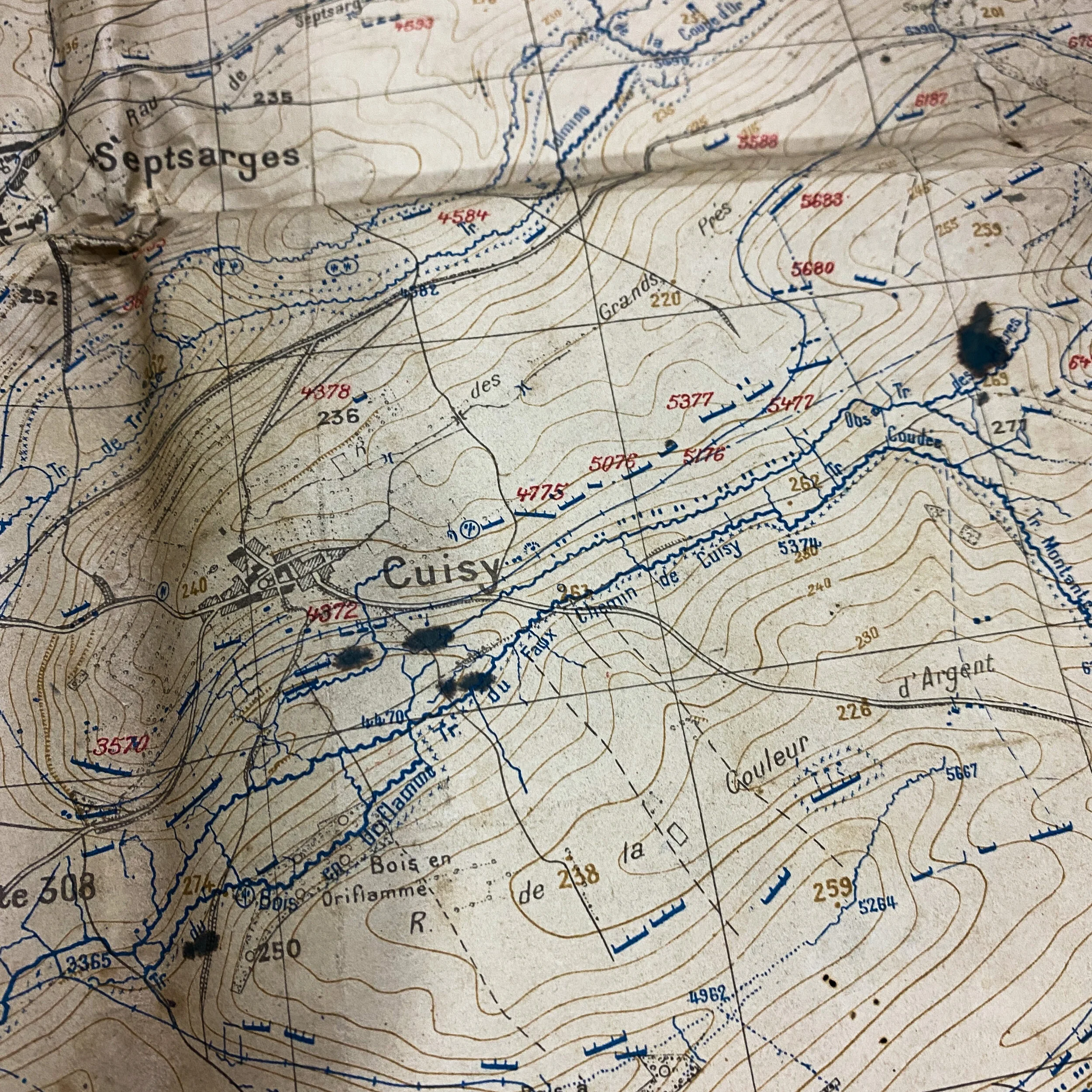
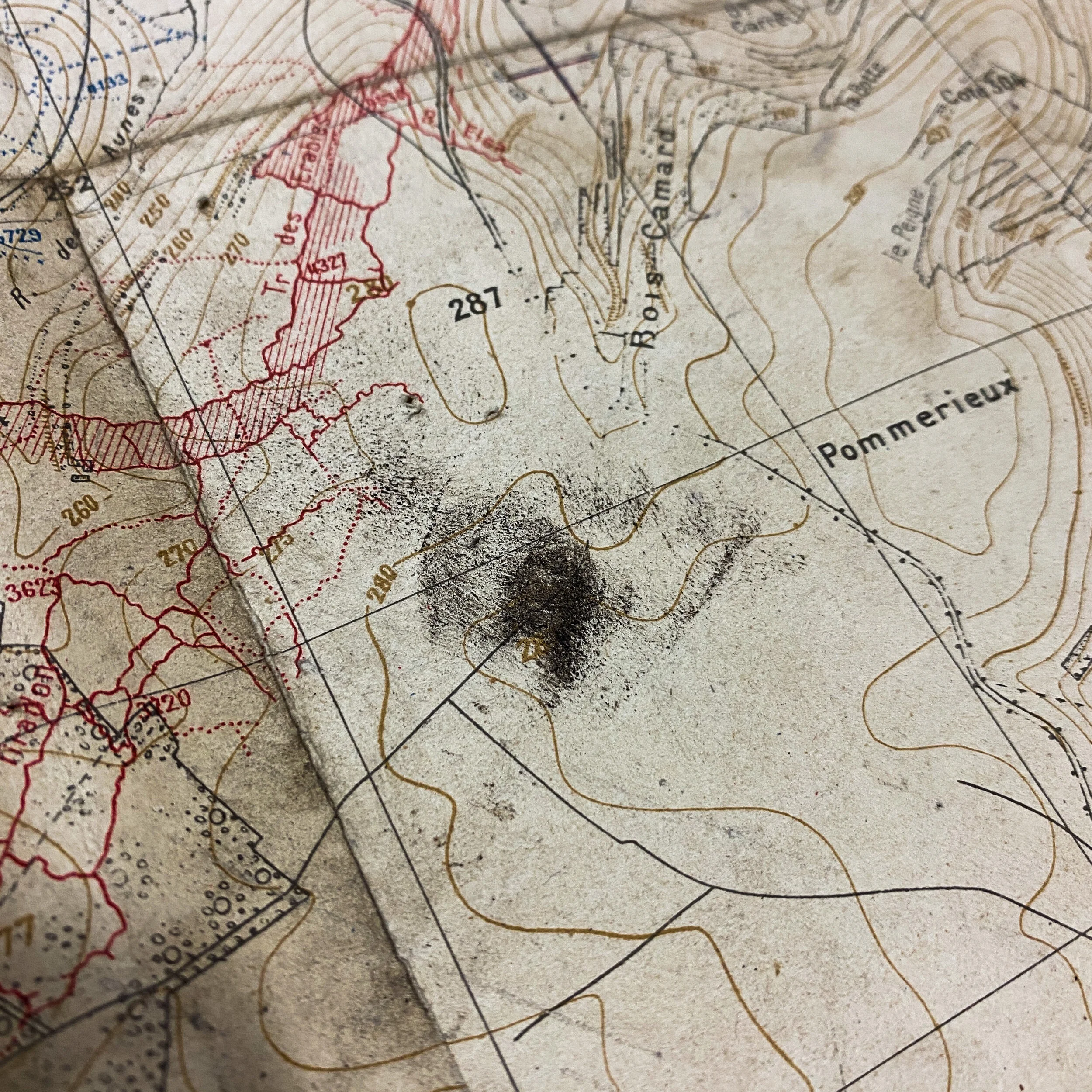

RARE* May 1918 Dated - Marbache Sector - Meuse-Argonne Offensive Trench Map - "Verdun" - 1st Lieut.. E. V. McKey Jr. - 134th Field Artillery
Size:
This World War 1 French printed trench map is updated and revised with the most updated German trenches as of ‘8 Mai 1918’ or May 8th, 1918. Titled “Verdun”, this map shows the geographical landscape of the area held by Germans during the final Allied offensive of 1918 or better known as the Meuse–Argonne offensive. The Meuse–Argonne offensive (also known as the Meuse River–Argonne Forest offensive, the Battles of the Meuse–Argonne, and the Meuse–Argonne campaign) was a major part of the final Allied offensive of World War I that stretched along the entire Western Front. It was fought from September 26th, 1918, until the Armistice of November 11, 1918, a total of 47 days. The Meuse–Argonne offensive was the largest in United States military history, involving 1.2 million American soldiers. It is the second deadliest battle in American history, resulting in over 350,000 casualties including 28,000 German lives, 26,277 American lives and an unknown number of French lives. Meuse–Argonne was the principal engagement of the American Expeditionary Force (AEF) during World War I. It was one of a series of Allied attacks known as the Hundred Days Offensive, which brought the war to an end. It was the largest and bloodiest operation of World War I for the AEF even if, given the scale of other battles on the Western Front, its size was limited and the operation itself secondary as it was far from the main offensive axis.
This map would have been similar to those used in the planning of attack in the area, divisional movements, as well as artillery fire support. For the added assistance of artillery firing coordinates, a transparent overlay of fine paper would have most likely been placed over this map and written on with H+ hours and firing lines ordered by headquarters. This map shows important villages and towns such as Avocourt, Nantillois, Boureulles, Vauquois, Cheppy, Recicourt, and Cuisy. This is in the same sector where 1st Lieut.. E. V. McKey Jr. and the 134th Field Artillery provided extensive fire support and artillery barrages during the Meuse–Argonne offensive.
What makes this map so unique is the heavily used and dirty nature that the map shows. This map shows a very clear sector of the frontline near the village of Avocaurt (seen on map) where the initial attack of the Meuse-Argonne offensive began on September 26th. It was here where the 77th 28th, 35th, 91st, 31st, 19th, 4th, 80th, and 33rd Infantry began to assault the German lines. As the offensive attacks progressed, the A.E.F. line moved up this map reaching the town of Nantillois (seen on map) to as far as Sivry on October 31st, 1918. This map was very heavily used and played an extremely important and vital role in the offensive.
Meuse-Argonne: 26th September - 11th November 1918:
At the end of August Marshal Foch had submitted plane to the national commanders for a final offensive along the entire Western Front, with the objective of driving the enemy out of France before winter and ending the war in the spring of 1919. The basis for his optimism was the success of Allied attacks all along the front in August. Furthermore, he pointed out, the Allies already had active operations in progress between the Moselle and Meuse, the Oise and Aisne, and on the Somme and Lys Rivers. Foch acknowledged that the Germans could stave off immediate defeat by an orderly evacuation combined with destruction of materiel and communications. Therefore the overall aim of the fall offensive would be to prevent a step-by-step enemy retirement. As Foch anticipated, the Germans eventually contributed to the success of his strategy. Their High Command could not bring itself to sacrifice the huge stores collected behind the front lines, and so delayed the withdrawal of its armies.
Foch's great offensive, planned to begin in the last week of September, called for a gigantic pincers movement with the objective of capturing Aulnoye and Mézières, the two key junctions in the lateral rail system behind the German front. Lose of either of these junctions would hamper seriously the German withdrawal. Despite grumbling from the English that they lacked the necessary manpower, a chiefly British army was assigned the teak of driving toward Aulnoye. The A.E.F. was designated for the southern arm of the pincers, the thrust on Mézières. Simultaneously the Belgian-French-British army group in Flanders would drive toward Ghent, and the French armies in the Oise-Aisne region would exert pressure all along their front to lend support to the pincers attack.
Pershing decided to strike his heaviest blow in a zone about 20 miles wide between the Heights of the Meuse on the east and the western edge of the high, rough, and densely wooded Argonne Forest. This is difficult terrain, broken by a central north-south ridge that dominates the valleys of the Meuse and Aire Rivers. Three heavily fortified places-Montfaucon, Cunel, and Barricourt-as well as numerous strong points barred the way to penetration of the elaborate German defenses in depth that extended behind the entire front. This fortified system consisted of three main defense lines backed up by a fourth line less well-constructed. Pershing hoped to launch an attack with enough momentum to drive through these lines into the open area beyond, where his troops could then strike at the exposed German flanks and, in a coordinated drive with the French Fourth Army coming up on the left, could cut the Sedan- Mézières railroad.
The task of assembling troops in the concentration area between Verdun and the Argonne was complicated by the fact that many American unite were currently engaged in the St. Mihiel battle. Some 600,000 Americans had to be moved into the Argonne sector while 220,000 French moved out. Responsibility for solving this tricky logistical problem fell to Col. George C. Marshall, Assistant Chief of Staff, G-3 (Operations), First Army. In the ten-day period after St. Mihiel the necessary troop movements were accomplished, but many untried divisions had to be placed in the vanguard of the attacking forces.
On the 20-mile Meuse-Argonne front where the main American attack was to be made, Pershing disposed three corps side by side, each with three divisions in line and one in corps reserve. In the center was the V Corps (from right to left the 79th, 37th, and 91st Divisions with the 32d in reserve), which would strike the decisive blow. On the right was the III Corps (from right to left the 33d, 80th, and 4th Divisions with the 3d in reserve), which would move up the west aide of the Meuse. On the left was the I Corps (from right to left the 35th, 28th, and 77th Divisions with the 92d in reserve), which would advance parallel to the French Fourth Army on its left. Eastward across the Meuse the American front extended in direct line some 60 miles; this sector was held by two French Corps (IV and II Colonial) and the American IV Corps in the St. Mihiel sector. Pershing had available to support his offensive nearly 4000 guns, two-thirds manned by American artillerymen; 190 light French tanks, mostly with American personnel; and some 820 aircraft, 600 of them flown by Americans.
The Meuse-Argonne Offensive falls into three phases. During the initial phase (26 September-3-October) the First Army advanced through most of the southern Meuse-Argonne region, captured enemy strong points, seized the first two German defense lines, and then stalled before the third line. Failure of tank support, a difficult supply situation, and the inexperience of American troops all contributed to checking its advance.
In the second phase (4-31 October) the First Army, after the inexperienced divisions had been replaced by veteran units, slowly ground its way through the third German line. The enemy was forced to throw in reserves, drawn from other parts of the front, thus aiding the Allied advances elsewhere. In the face of a stubborn defense, American gains were limited and casualties were severe, especially as a result of the newly devised enemy tactic of attacking frontline troops with airplanes. First Army air unite retaliated with bombing raids which broke up German preparations for counterattacks. By the end of October the enemy had been cleared from the Argonne and First Army troops were through the German main positions. Two notable incidents of this phase of the campaign were the fight of the "Lost Battalion" of the 77th Division (2-7 October), and the feat of Corp. (later Sgt.) Alvin C. York, who single-handedly killed 15 Germans and captured 132 on 8 October.
In mid-October the organization of the Second Army was completed, at Toul in the St. Mihiel sector, to provide means for better control of the lengthening American front and solutions of the diverse tactical problems that it presented. Pershing assumed command of the new army group thus formed.
Before the third and final phase (1-11 November) of the offensive got under way, many of the exhausted divisions of the First Army were replaced, roads were built or repaired, supply was improved, and most Allied units serving with the A.E.F. were withdrawn. On 1 November First Army units began the assault of the now strengthened German fourth line of defense. Penetration was rapid and spectacular. The V Corps in the center advanced about six miles the first day, compelling the German units west of the Meuse to withdraw hurriedly. On 4 November the III Corps forced a crossing of the Meuse and advanced northeast toward Montmédy. Elements of the V Corps occupied the heights opposite Sedan on 7 November, thus finally accomplishing the First Army's chief mission-denial of the Sedan- Mézières railroad to the Germans. Marshal Foch, at this juncture, shifted the First Army left boundary eastward so that the French Fourth Army might capture Sedan, which had fallen to the Prussians in 1870. American units were closing up along the Mouse and, east of the river, were advancing toward Montmédy, Briny, and Metz, when hostilities ended on 11 November.
General Pershing authorized the results of the Meuse-Argonne Campaign, the greatest battle in American history up to that time, in his Final Report: "Between September 26 and November 11, 22 American and 4 French divisions, on the front extending from southeast of Verdun to the Argonne Forest, had engaged and decisively beaten 47 different German divisions, representing 25 percent of the enemy's entire divisional strength on the western front.
The First Army suffered a loss of about 117,000 in killed and wounded. It captured 26,000 prisoners, 847 cannon, 3,000 machineguns, and large quantities of material." More than 1,200,000 Americans had taken part in the 47-day campaign.
- U.S. Army Center of Military History